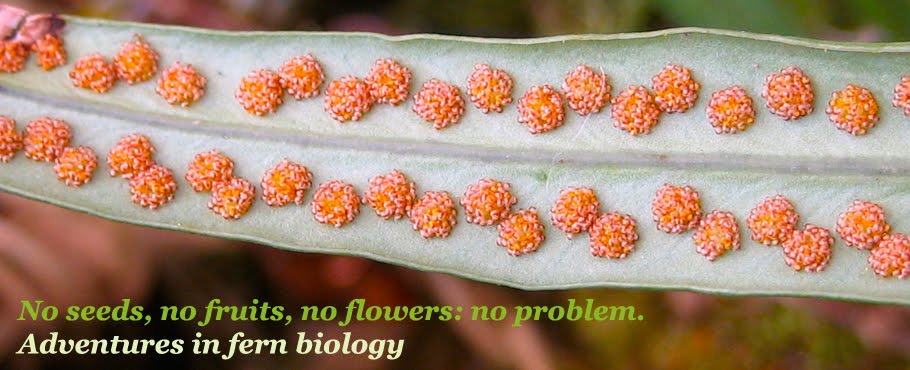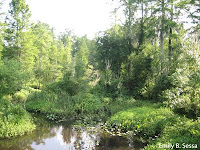
One of the most exciting parts of my trip to the Carolinas was finding Dryopteris ludoviciana, the Southern Shield Fern. Dryopteris is the genus I work on, and there are 13 species in North America; D. ludoviciana was the last one I hadn't yet seen in the field, so it was a total thrill to find it! We had information from some old herbarium vouchers (circa 1939) that it could be found with one of its hybrid offspring, D. celsa, in a swampy area next to a creek in northeastern South Carolina. After hacking through the woods and underbrush for an hour, we finally stumbled across both of the ferns growing happily together at the base of a cypress tree.
This is the open-water part of this lovely swamp:
D. ludoviciana is one of the putative parents of D. celsa, which is a hybrid; the other parent is D. goldiana. They all look vaguely similar, but the first two (which we found here) in particular share a lot of features. Side by side, however, they're clearly different. In the image below, D. celsa is on the left and D. ludoviciana is on the right. D. celsa has larger pinnae overall, and there isn't much difference between the sterile pinnae (towards the bottom of the frond) and the fertile pinnae (the two or three topmost in the picture). D. ludoviciana has smaller pinnae overall, compared to D. celsa, but there's also a definite difference between the sterile and fertile pinnae. D. ludoviciana's upper, fertile pinnae are contracted and very reduced (see photo just above, right).
















